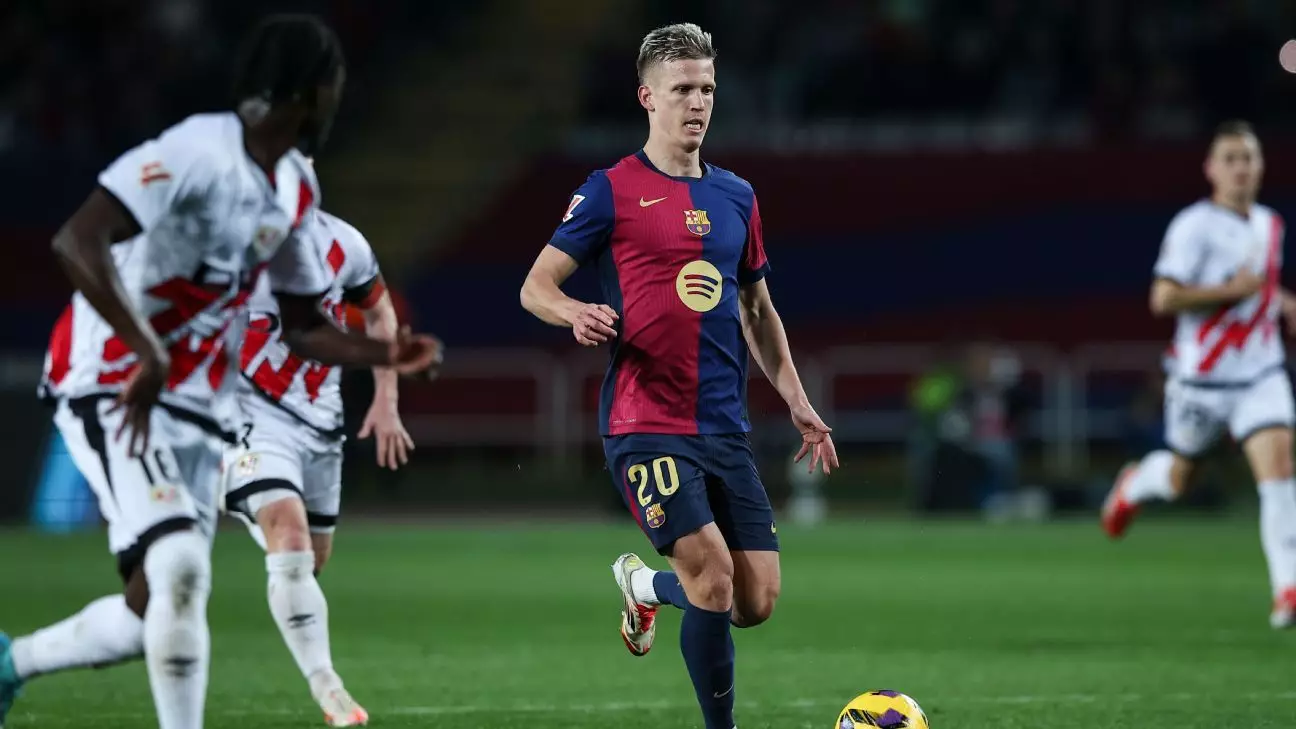FC Barcelona, one of the most illustrious football clubs globally, has recently made headlines due to a significant boost in their financial stability. LaLiga announced that the Catalan giants now have a spending cap exceeding €463 million (approximately $483.7 million), marking a substantial improvement of nearly €40 million compared to the season’s beginning. This stands in stark contrast to the previous year when Barcelona’s financial limitations were drastically reduced to €204 million. The club’s resurgence is attributed to strategic financial maneuvers aimed at regaining competitiveness within Spanish football.
One of the pivotal factors contributing to Barcelona’s improved fiscal health was the successful sale of 475 VIP seats at Spotify Camp Nou, which is undergoing a redevelopment process. The deal, establishing partnerships with two investors from the Middle East for a duration of up to 30 years, reportedly amounts to around €100 million. This infusion of cash is crucial for the club, helping bridge the financial chasm created in previous seasons due to excessive expenditures and the global pandemic’s repercussions on sports revenues.
While Barcelona’s situation appears brighter, it is essential to contextualize these figures within LaLiga’s broader financial landscape. Real Madrid continues to lead the pack with a spending cap of €755 million. Following Barcelona are Atlético Madrid (€314 million), Real Sociedad (€160 million), and Villarreal (€135 million). Interestingly, Sevilla’s severe financial struggles have relegated them to the league’s lowest cap of €684,000, highlighting the stark differences among clubs and the variable financial health within the league.
LaLiga’s spending cap system is a vital mechanism to ensure clubs maintain financial discipline. It delineates how much a club can allocate for wages, bonuses, and amortization on transfer fees within a season. The framework for determining each club’s cap is based on the overall revenue minus operating costs and debt obligations. Clubs exceeding their limits face stringent restrictions, particularly in transfer negotiations, where they can only utilize a small portion of any savings or proceeds they generate.
Barcelona, on the other hand, has achieved compliance with its spending cap regulations. LaLiga confirmed earlier in the year that the club appears to have adjusted its financial strategy, allowing them to spend 100% of any funds saved or generated—a provision referred to as the 1:1 rule. This newfound flexibility is arguably essential as the club embarks on a journey to revitalize their squad and reclaim their position at the pinnacle of Spanish and European football.
However, the pathway to stability is not devoid of obstacles. Despite the club’s improved financial standing, uncertainty surrounds the registration of new players, notably Dani Olmo and Pau Víctor. LaLiga and the Spanish Football Federation (RFEF) indicated that Barcelona had missed a critical deadline required to confirm compliance with their spending limits. Consequently, the two players remained unregistered, as the RFEF’s regulations do not permit second registrations within a single season, regardless of the club’s financial readiness.
In a surprising turn of events, Barcelona has managed to obtain an injunction against the ruling from Spain’s sports ministry, the Consejo Superior de Deportes (CSD), which is now set to investigate the club’s appeal—a process that could extend up to three months. Meanwhile, LaLiga’s counter-appeal against the CSD’s decision adds another layer of complexity to the situation. As things stand, both Olmo and Víctor are still eligible for selection, yet the uncertainty casts a long shadow over Barcelona’s immediate plans as they prepare for the ongoing season.
Barcelona’s renewed financial strength offers a glimpse into the club’s potential recovery, but the specter of registration issues and strict regulatory frameworks continues to loom large. The club must find a balance between safeguarding its economic interests and navigating the complex landscape of player registrations. As Barcelona forges ahead, it must also hone its strategic vision to foster sustainable growth while competing in an increasingly challenging football environment. The unfolding months will be critical for the club as it strives to match its on-field performances with a resilient financial footing, ensuring that the glory days of yesteryear are not just a fleeting memory but rather the foundation of future successes.

